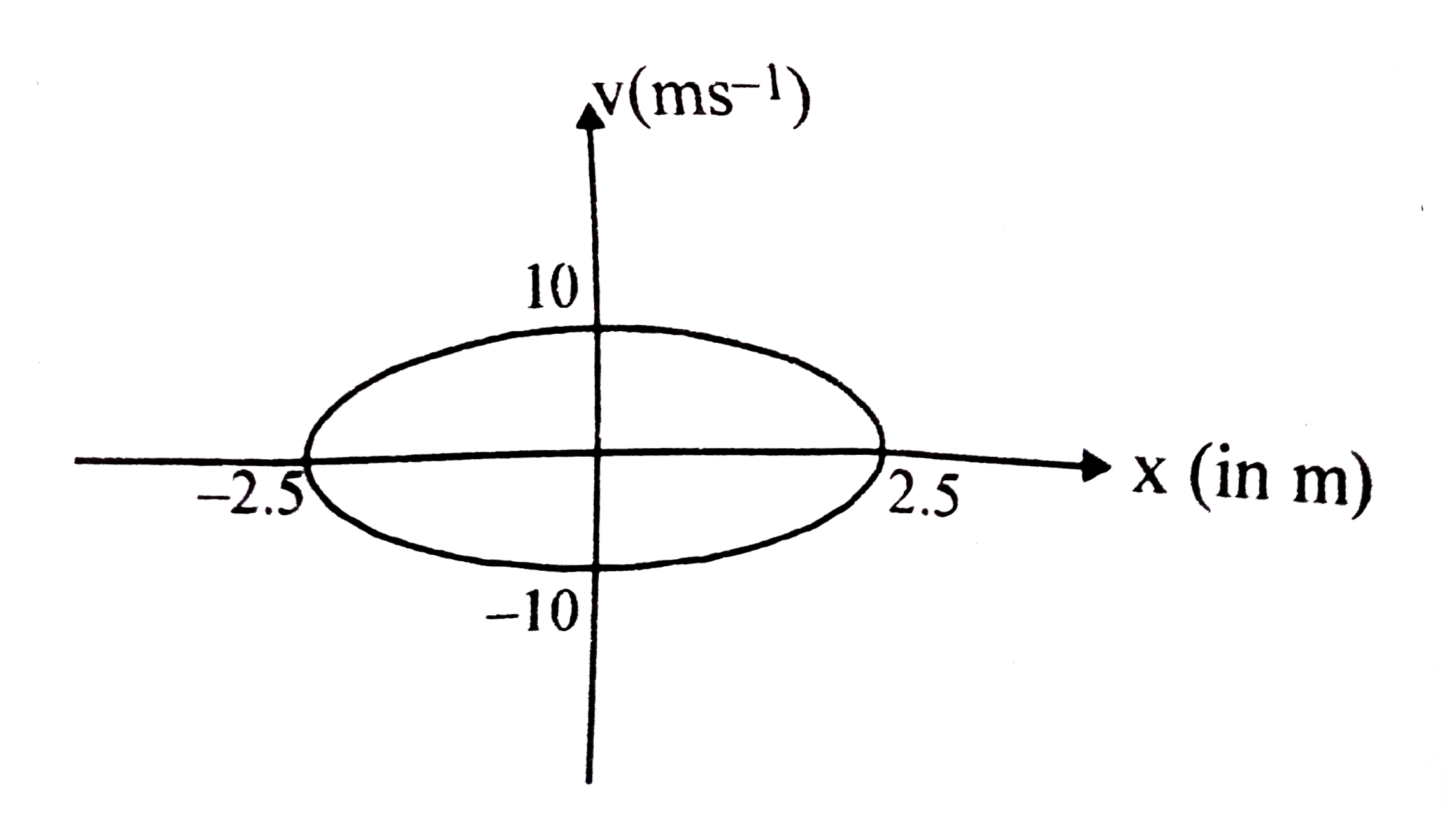STATEMENT-1 : In simple harmonic motionn graph between celocity and displacement from mean position is elliptical.
STATEMENT-2 : Relation between and is given by .
Statement-1 is True, Statement-2 is True, Statement-2 is a correct explanation for Statement-1.
Statement-1 is True, Statement-2 is True, Statement-2 is NOT a correct explanation for Statement-1.
Statement-1 is True, Statement-2 is False.
Statement-1 is False, Statement-2 is True.
The correct Answer is:A
Step by step video, text & image solution for STATEMENT-1 : In simple harmonic motionn graph between celocity (v) and displacement (x) from mean position is elliptical. STATEMENT-2 : Relation between v and x is given by (v^(2))/(omega^(2)A^(2))+(X^(2))/(A^(2))=1. by Physics experts to help you in doubts & scoring excellent marks in Class 11 exams.
Similar Questions
The velocity-displacement graph of a particle is shown in the figure. Write the relation/equation between v and x.
 .View Solution
.View SolutionThe figure shows graph between velocity 'V' and displacement 'X' from mean position of a particle performing simple harmonic motion

The time period of motion of particle is:View Solution
Knowledge Check
- Question 1 - Select One
STATEMENT-1 : In simple harmonic motion, at extreme position the velocity and acceleration of object is zero.
STATEMENT-2 : In simple harmonic motion at mean position?AStatement-1 is True, Statement-2 is True, Statement-2 is a correct explanation for Statement-1.BStatement-1 is True, Statement-2 is True, Statement-2 is NOT a correct explanation for Statement-1.CStatement-1 is True, Statement-2 is False.DStatement-1 is False, Statement-2 is True. - Question 2 - Select One
If a graph is plotted between velocity (v) and displacement (y) of a particle executing SHM from mean position, then the nature of the graph is
AStraight lineBParabolaCEllipseDHyperbola - Question 3 - Select One
Statement-I : In simple harmonic motion, the graph between velocity and the displacement is an ellipse.
Statement-II : In simple harmonic motion the phase difference between velocity and displacement is π/2.AStatement-I is true, Statement-Ii is true, Statement-II is a correct explanation for Statement-I.BStatement-I is true, Statement-II is true, Statement-II is NOT a correct explanantion for Statement-I.CStatement-I is true, Statement-II is falseDStatement-I is false, Statement-II is true
STATEMENT-1 : A particle is performing simple harmonic motion along X axis with amplitude A. If a graph is plotted between velocity of particle and its X coordinate then graph will be elliptical.
STATEMENT-2 : Velocity of particle in SHM as a fuction of position is given by
v=ω√A2−X2.View SolutionA particle is performing harmonic motion if its velocity are v1 and v2 at the displecement from the mean position are y1 and y2 respectively then its time period is
View SolutionThe figure shows graph between velocity 'V' and displacement 'X' from mean position of a particle performing simple harmonic motion

The velocity of particle when it is at a distance 1.5m from mean position is :View SolutionA body is executing simple harmonic motion. At a displacement x from mean position, its potential energy is E1=2J and at a displacement y from mean position, its potential energy is E2=8J. The potential energy E at a displacement (x+y) from mean position is
View SolutionA simple harmonic oscillator has amplitude 2 A and maximum velocity 2 V. Then its displacement at which its velocity is V and the velocity at displacement A are
View Solution

